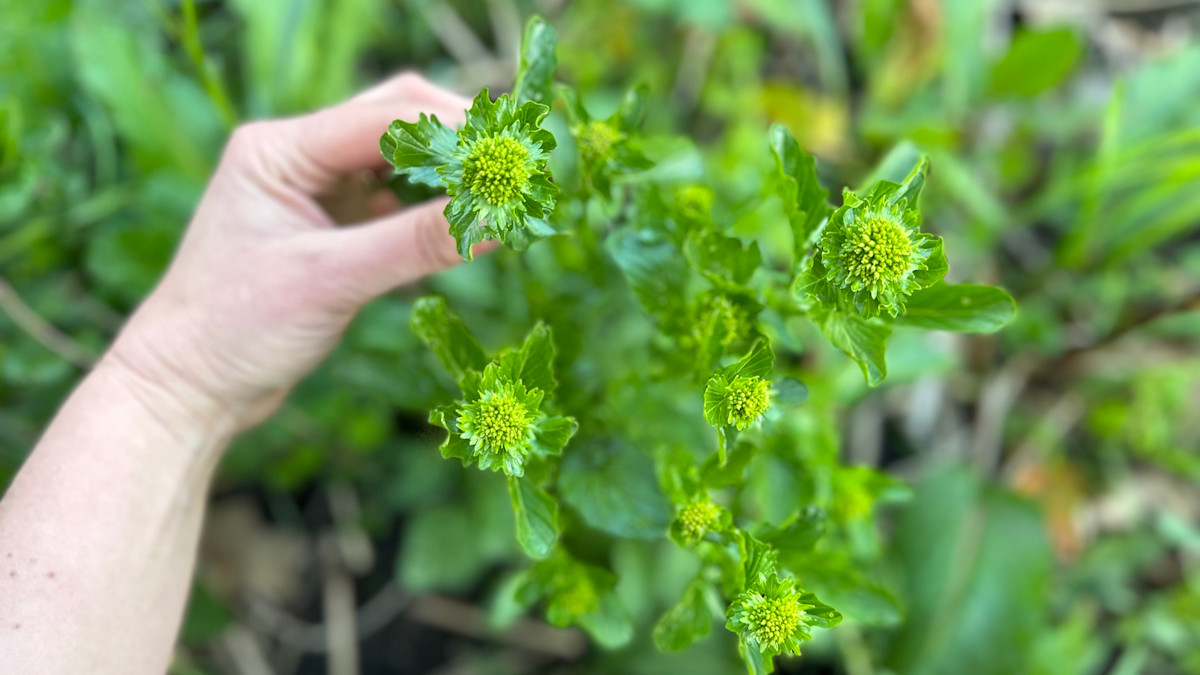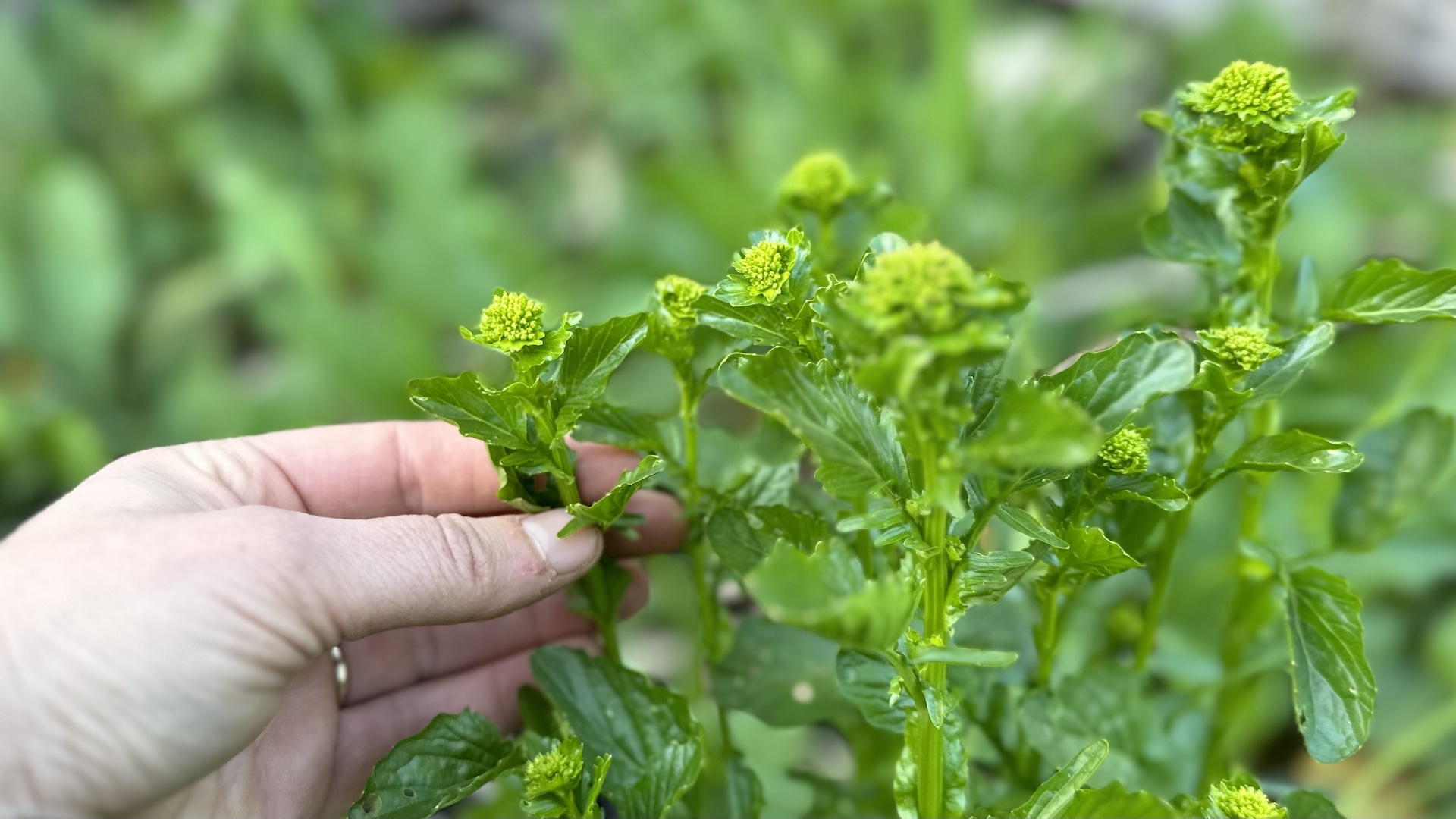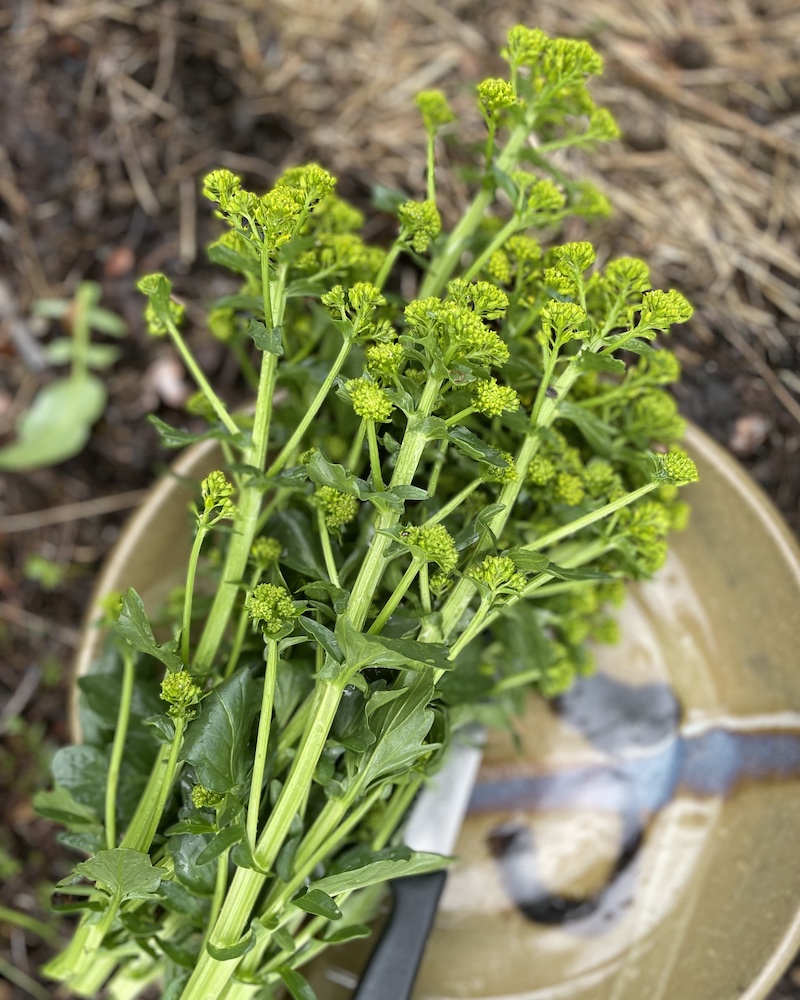
If there were a way to measure each nation’s tolerance for bold flavors that were not made bold by salt or sugar, I’d bet The United States would have the lowest tolerance of all, and I feel like this is something we really should work on. We’re a melting pot of so many cultures with so many beautiful foods—you’d think that the pot would be brimming with flavor.
This is a disservice to us all—culinarily, nutritionally, and ecologically. This land mass offers us hundreds of edible plants, both native and introduced, that each have their own unique flavors, functions and ecological and nutritional niches, that, when amassed inside our great melting pot, taste vividly of North America.
As of late, though, we seem to favor the sweet, large, starchy, lumpen, and mild, while casting off anything too unapologetic or nuanced. Many of us reach a certain age and think that we just like what we like and we’re stuck with our food preferences like our shoe size, but this isn’t true. The pallet is adaptable at any age, and you really can train yourself to not only tolerate new flavors but love and crave them. (I can personally vouch for this after putting myself through a rigorous hot sauce regimen and increasing my heat tolerance tenfold, thus opening the door to whole new regions of fiery cuisines that I’d previously tucked tail to, that now bring me immense burning pleasure.)
This is all a rather transparent campaign to try to get you, through a little loving shame, to try one of my favorite vegetables—wintercress (a.k.a. yellow rocket, creasy greens, or bittercress) because, yes, it is bitter. I’m not telling you that it’s bitter as a warning, I’m telling you it’s bitter as a welcome, so that you’ll seek it, trusting that it’s something you didn’t even know you were missing and can easily learn to love. Plus, you are what you eat, right? Don’t eat baby food—eat boldly—eat bittercress.

How to Forage for Wintercress
Wintercress (Barbarea vulgaris) is a member of the mustard family and is present in all but a handful of U.S. states. It’s so abundant that it’s been labeled a noxious weed in many states, so it should be easy for most people to find. I was initially told it’s an invasive plant, but Sam Thayer’s new Field Guide to Edible Wild Plants of Eastern & Central North America labels it as a native plant.
“Like beer, wintercress has a strong flavor and is an acquired taste. People who have long eaten it, crave it. Many botanists separate the native North American populations into a separate species, B. orthoceras, but nobody seems able to explain clear or consistent differences between them,” he writes. “I think the distinction lies somewhere between insignificant and bogus.” Thayer does acknowledge a close relative, Barbarea verna, as a separate species commonly known as southern wintercress, which has a spicier flavor but can be used largely in the same ways.
I find wintercress predominantly in and around the edges of farm fields, gardens, parks, vacant lots, and wet meadows. Recent disturbance, moist soil, and full sun seem to be the trifecta of conditions that wintercress prefers. In early spring, when everything is still brown, if you drive by a farm field and see gleaming mounds of emerald green leaves, there’s a good chance it’s wintercress whose basal rosettes bulk up long before most other greens are even beginning to emerge.
At this stage, you can identify it by its vibrant green, semi-gloss, deeply lobed leaves arranged in a basal rosette. The leaves somewhat resemble arugula but are more succulent with larger, rounder lobes, especially the terminal lobe at the tip of the leaf.
It’s important to note that at this stage wintercress has one toxic lookalike to be aware of called butterweed (Packera glabella), which has similarly lobed leaves. It can be distinguished by an increased number of lobes per leaf as well as teeth on the lobe margins, a silvery sheen on the upper surface of the leaves, and hollow stems with purple ridges.
As the season progresses, wintercress will send up fat, green, hairless flower stems with angled edges that branch toward the top of the stem. The stems have small, sparse leaves with large, blunt teeth that clasp the stem. The unopened flower buds look like tiny florets of broccoli but are lighter green in color and expand and bloom into loose clusters of bright yellow flowers with four petals arranged in a cross.

How to Prepare and Eat Wintercress
The leaves, unopened flower buds with stalks, and the open flowers of wintercress are all uniquely edible and versatile. The leaves are best in late fall or early spring before flowering when they are most tender and least bitter. I like to cut the newer leaves from the middle half of the rosette and leave the outer ring. I toss these leaves in with other mixed greens for stir-frying, braising, sauteing, or adding into soups, beans, creamy pasta sauces, and egg dishes. They’re also a great addition to ferments like krauts and kimchis or green “sauces” like early spring pesto, salsa verde, chermoula, or zhoug.
Next comes the stalks and flower buds which are my favorite as a standalone vegetable. I treat these exactly like broccoli raab and either stir-fry or quickly saute in fat with a splash of cider vinegar or lemon juice to enjoy as a side. You can also quickly blanch them in salted water, lightly coat in oil and toss on the grill, or snap the top florets off and top creamy pasta or cheesy pizza. It’s a short season for the unopened flower stalks, and I relish it as one does asparagus or ramps.
Lastly, come the bright yellow flowers, which I pinch off at the stem as big clusters and add to the stir-fry pan at the end of cooking. I also add to charcuterie and cheese boards, pile onto sandwiches instead of sprouts or microgreens, or toss a few onto soup, poultry, or fish as a spicy, bright yellow garnish.




Conversation